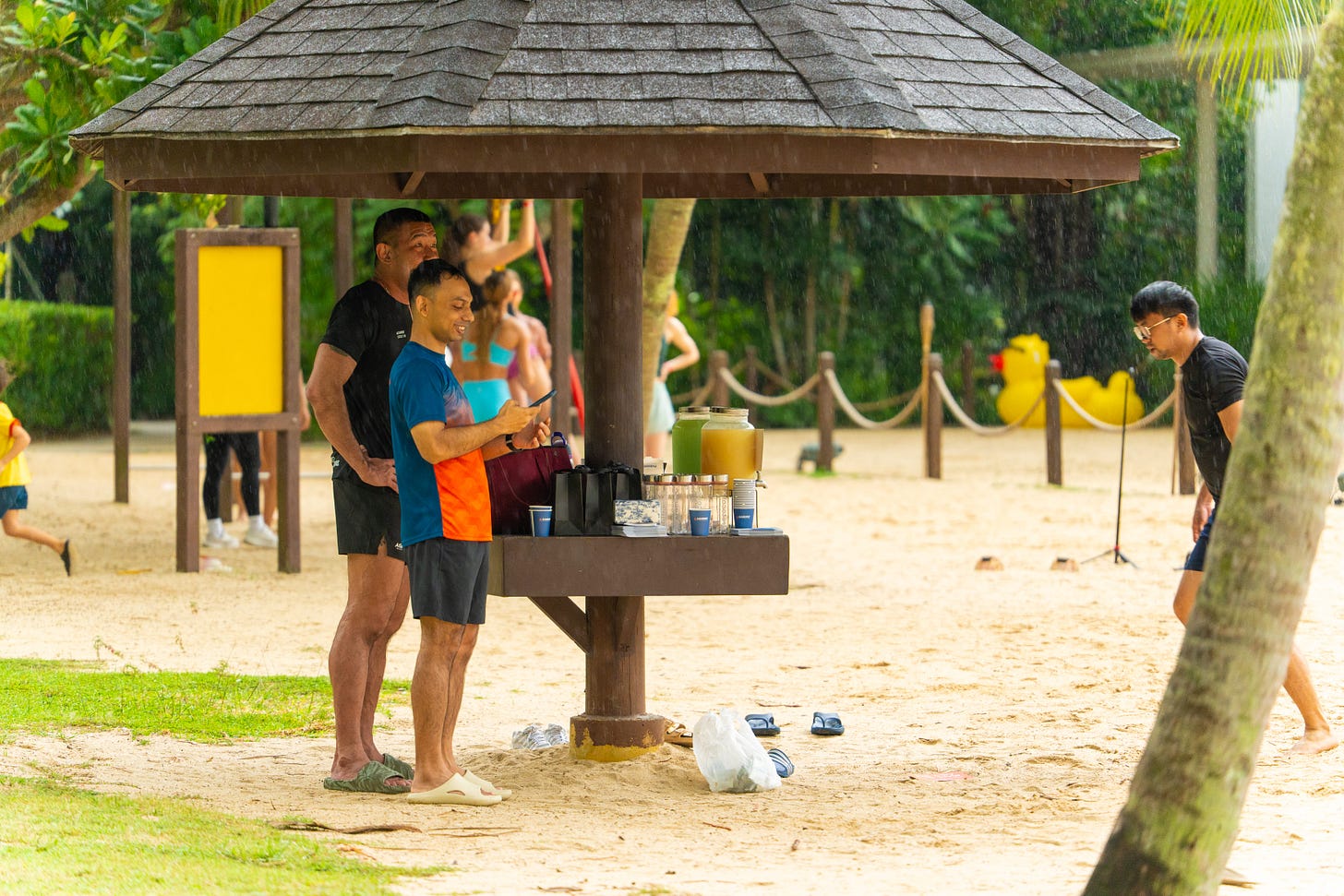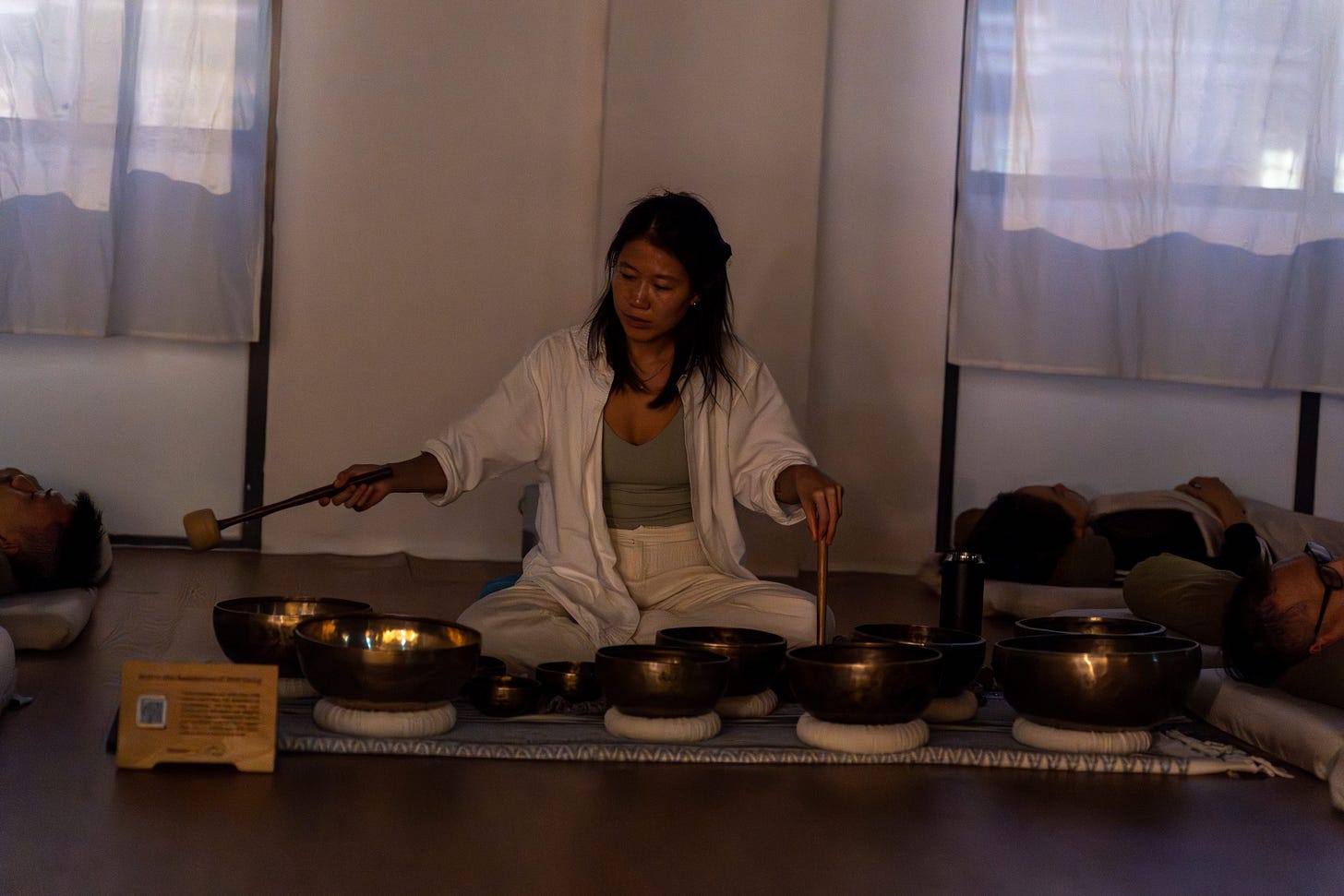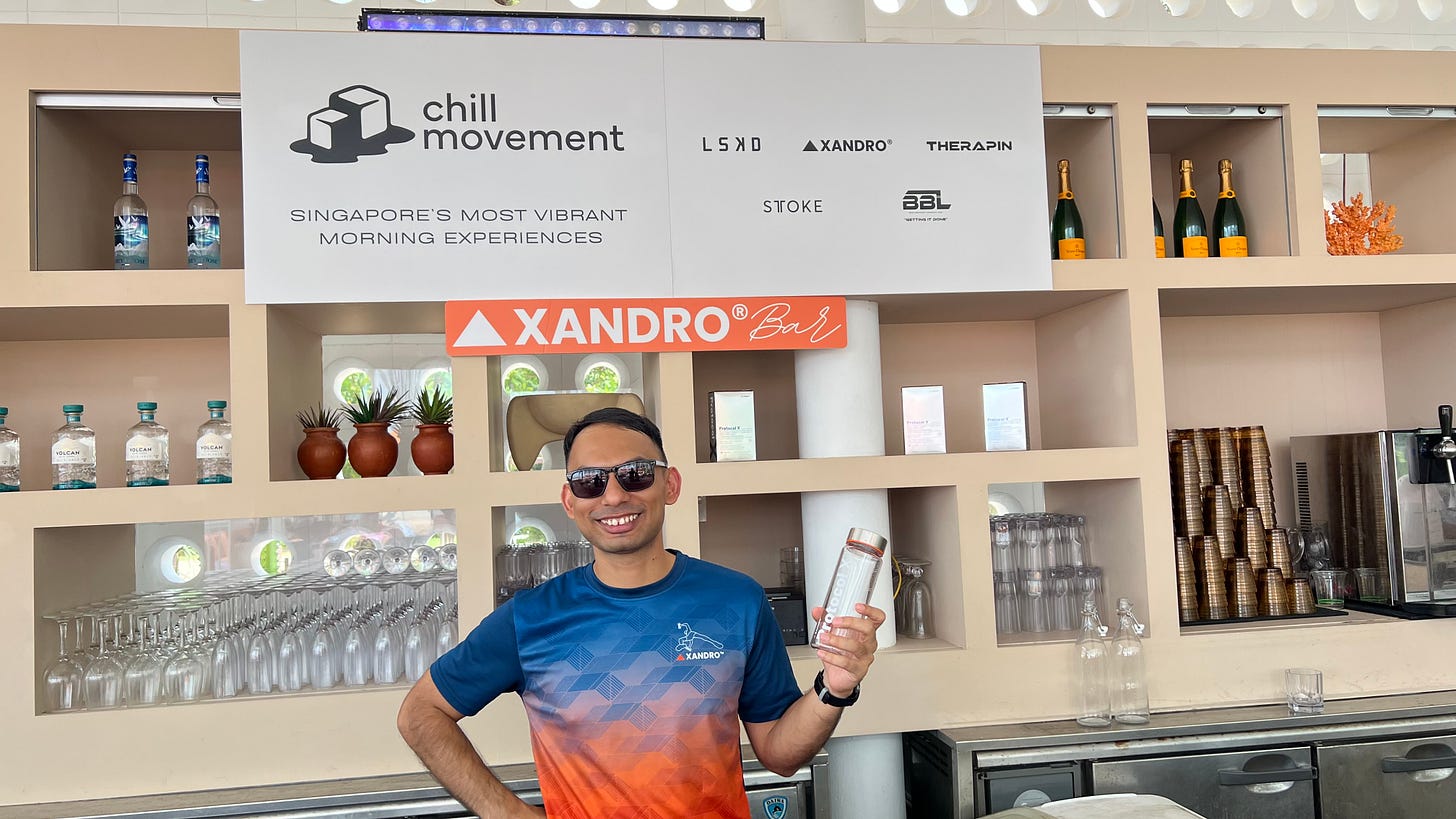From Booths to Experiences: My Event Marketing Playbook (Still in Progress)
Events look messy - expensive, sweaty, half the time nothing works. At the start, I avoided them. But over the past 2 years, they’ve become one of the strongest ways we build trust and community.
Hi, I’m Shan. I run Xandro Lab, a science-first longevity brand in Singapore. Every Sunday I write here on Out of Singapore — part diary, part operator notes, part therapy.
This week, I want to share something I’ve been building in the background for a while. Not just today, not just after Urban Throwdown. Over the past two years I’ve written about events in bits and pieces — the mistakes, the small wins, the strange lessons. A few weeks ago I sat down and pulled it all together into one place. I call it The Event Playbook.
It’s not theory. It’s not even finished. It’s just what I’ve learned from dragging banners through marathons, handing out free samples at CrossFit comps, watching people ignore us at gyms, and slowly figuring out how to turn a booth into an experience.
From that first tiny booth at Singapore Marathon → to gamified engagement → to hydration stations → to now dreaming about bigger brand-owned experiences.
This isn’t a neat “guide.” It’s still a work in progress. But I think it’s worth sharing — especially if you’re running a brand or thinking of starting one. Maybe it saves you a few wrong turns. Or maybe it just makes you feel less alone when you’re standing at a booth wondering what the hell you’re doing there.
So here’s the messy ladder I’ve been climbing.
It started with random booths where nobody knew us. Then we added little tricks to get people to stop. Then we stopped playing small and built real experiences — hydration, recovery, workshops. And now, I keep thinking about what comes next.
This is the playbook as it stands today: from booths → engagement → experiences → maybe, one day, full communities.
Stage 1: Just Show Up
The first booth we ever got was at Singapore Marathon. Honestly, I thought it would be embarrassing — one small table next to giants like Puma. But we gave away 300–400 units for free, and people actually cared. They followed us, checked us out online, remembered us.
Lesson: don’t try to sell in the beginning. Just be seen.
Stage 2: Make It Fun
After that, we tried smaller venues. Some were a complete flop (Ground Zero, for example — nobody wanted to talk). But then we added a spin-the-wheel game, and suddenly people stopped. They laughed, they engaged. Add a couple of creators or loyal customers hanging around, and the booth didn’t feel invisible anymore.
Lesson: people need a reason to stop. Give them one.
Stage 3: Solve Real Problems
Once people knew who we were, we had to do more than hand out freebies. So we started building experiences: hydration stations, recovery setups, sleep workshops. At Urban Throwdown this week, all we really did was bring cold water and ice. Sounds basic, but at a sweaty CrossFit comp in Singapore, it was gold. Everyone else was selling. We were quenching.
Lesson: don’t just give. Solve.
Stage 4: Dream Bigger
Where this is heading is beyond booths. One day I want to build a longevity club — cold plunge, sauna, red light therapy, workshops, community space. From events → to experiences → to something that lives on its own. We’re not there yet, but that’s the direction.
Lesson: keep climbing the ladder.
Partnerships Are Everything
None of this would’ve happened without people. The first time we got into Singapore Marathon, it was through a PR contact. HYROX didn’t just land in our lap — we chased it. Other times, it was random introductions, or founders building event platforms who pulled us in.
Lesson: events aren’t just about budget. They run on networks. Be the brand that shows up, adds value, and people will start calling you back.
Be Shameless
Events give you a stage. Don’t waste it by being polite. At one booth, we stuffed 600 units (around $7,000 worth) into goodie bags. People noticed - because most goodie bags are junk. At Tanjong Beach Club, we didn’t stay confined to our booth. We spread banners everywhere. It looked like we sponsored the event when we hadn’t.
Lesson: push harder. Overdeliver. Be the scrappy one who makes organizers think, “Damn, these guys are serious.”
The Checklists That Save You
Events look glamorous on Instagram, but on the ground it’s sweaty chaos. What saves you is checklists. Who’s carrying ice, who’s got the banners, who’s remembering extension cords (always forgotten), who’s filming content. One person needs to be on photos and videos, otherwise you’ll regret it later.
Lesson: plan for the boring stuff. Because on event day, everyone will be exhausted.
Operator Notes
Looking back, the ladder feels simple:
Stage 1 — Just show up.
Stage 2 — Make it fun.
Stage 3 — Solve real problems.
Stage 4 — Dream bigger.
But none of this felt simple while we were in it. Events aren’t clean marketing tactics you can A/B test in dashboards. They’re messy, human, and sometimes they punch you in the gut. But they also build trust in a way nothing else does.
Closing Reflections
Events are tiring. You haul boxes, set up banners, sweat through your shirt, sometimes feel invisible. But then someone stops, drinks what you made, and tells you they actually feel better. Or they come back a year later and say, “Hey, I remember you from that marathon.” That’s why I keep doing it.
It’s not perfect, it’s not even efficient half the time. But it’s real. And in a world of ads and algorithms, real still matters.
PS — This playbook is still a work in progress. I’ve been piecing it together over the past two years from notes, experiments, and mistakes. There’s plenty of room for improvement. If you’ve run events yourself — or if you’re trying to — I’d love to hear what’s worked (or failed) for you. DM me, drop me a note, or just reply here. Your feedback will shape the next version.
— Shan






